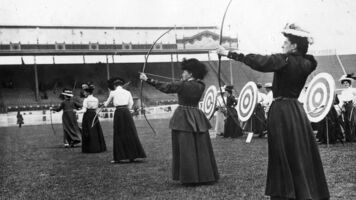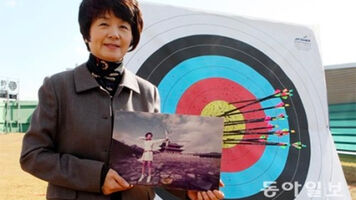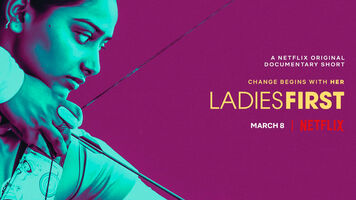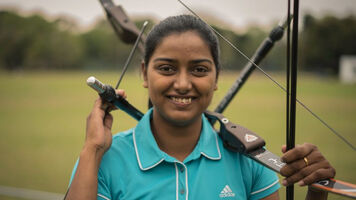Increase in female leadership next step for full gender equality in archery

As International Women’s Day hit its 50th anniversary this March since being marked by the United Nations, the development of women’s rights in that time has made significant strides.
Women in most of the world’s countries now have some form of suffrage, the ability to vote, the number of highest positions of state in the world held by women reached an all-time high in 2018 with 9.8 per cent, and an increased number of international frameworks have been created aimed to further boost women’s equality such as the Beijing Declaration and Platform for Action.
However, it is also important to remember that these are just strides and there are still barriers to be crossed when it comes to the gender divide.
So, what about archery? On the shooting line, for the most part, it is equal.
In the Olympic Games, 64 women archers and 64 men archers were present whilst 62 women and 75 men featured in the Paralympics at Paris 2024.
All female athletes shot in their respective disciplines, the same arrows, the same bows, the same distance, under the same pressure at Les Invalides as their male counterparts and will continue to do so in years to come.
This proudly makes archery one of the most equal sports and is among the oldest to allow women to compete, St Louis 1904 being the first Games both genders featured.
But beyond the athletes is where the equity battle still goes on.

Leading positions such as coaching are still lacking in gender equity which is the huge task faced by World Archery’s gender equity and inclusion committee.
“They question themselves, they feel that they’re not up to it, so they don’t put themselves forward,” said Lexie Matheson, one of five members of the ad hoc commission, on why there are far less women in leadership roles in archery and sport. “They’ve got to sit at the table.”
“Our function and some of the work that I’m doing at the moment is to encourage women who are sitting on the cusp of being in leadership roles to take that job to step forward, to step into that space as it’s not as scary as they might think, and that they are capable of doing it.”
“In terms of archery, it’s important that we have women in leadership positions where the leadership positions have some sort of controlling factor, that at least they’re in the conversation.”
Matheson, mother of New Zealand recurve men’s archer Finn Matheson, has been on the committee since 2021, which aims to protect and champion gender equity at all levels of the organisation and sport.
According to a Congressional Research Service report, women held 27 per cent of legislative seats around the world in 2024, a welcome increase of 15.6 per cent from 2004 but still considerably less than the 73 per cent of men.

In the Paris Olympics, despite there being gender balance amongst the athletes, just 17 per cent of archery coaches were female, the figure being an improved but still underwhelming 24 per cent in the Paralympics.
Therefore, with the two Games combined, out of 156 coaches, just 31 of those present at Paris were women, equalling 20 per cent overall.
The scaled back confidence amongst women from an early age Matheson believes is what restricts them from gunning for top roles in the sport.
“I think to some extent it’s what happens in our schools, which is a bit perverse when you’re talking about archery, and you end up talking about education.”
“It’s how we enable our young women, our girls to see themselves in a world that is welcoming and equal to them.”

The former president of Archery New Zealand led an event of her own at her local club in Auckland to mark International Women’s Day this 8 March, with a group of barebow, compound and recurve women archers shooting the world’s first arrows of the day due to the country’s geographical location.
It was followed by youth activities, a women’s tournament, prizegiving and kai, the name for traditional Maori cuisine.
This was the first of its kind with it debuting as a legacy event, making it a permanent fixture in the Auckland Archery Club calendar, but as well as aiming to enhance women’s reputation in the sport, Matheson wanted todays and future editions to champion inclusivity of all.
“The idea is that it doesn’t change anything that everybody’s welcome. You can’t talk about inclusion and then exclude people.”
Acknowledging that progress has been made, there are still more words to be turned into action according to Matheson and used her home country as an example.
One of national governing body Sport New Zealand’s main precepts is that at least 40 per cent of every sporting board in the nation should be women.

Although these numbers are better than nothing, Matheson discovered there is still more work to be done on the execution of such schemes.
“Clubs go, ‘We’re really proud of the fact we’ve got 40%’; I go, ‘Why wouldn’t you be proud of having 50%?’; ‘Oh, well, we can have more, but that’s the goal we’ve set’.”
“And then I look at the clubs and you find that the club captain, the president, the chairperson, whoever it is at the top there and the club captains particularly, they’re all men, so within the leadership structures of the sport, there are women involved, but it’s still a bit of a they’re there to make the tea.”
“They [women] don’t have that decision making power.”
Events like ones at Auckland Archery Club only show a “sliver” of the best quality of archery’s inclusivity but further campaigning is what is needed should full gender equity be achieved in archery and the world.
“It’s not a matter of just it will happen; it won’t happen unless we get out there,” added Matheson who also has a background in event management and political activism. “I don’t want to lie on my deathbed thinking there was something I could have done, and I didn’t do it.”
“It doesn’t have to be a fight, but if you’re not talking about it, if you’re not at the table, then that change is going to take so much longer.”

As the world on 8 March celebrated the progress of women’s stature in all affairs, there is still much work to be done.
Lexie, and her fellow colleagues on the gender equity and inclusion committee will not give up on their search for fair equality anytime soon.
But, the progressive history archery has compared to other sports is a firm platform to make greater improvements in the fight for equality.
“We have to work in terms of women not taking control but being equals in the leadership space, so that’s where I’ve put my energies.”
“Doing an event that’s complicated and involves talking to nice people, that’s the bonus and the benefit that I get, to talk to people outside the sport, to be an advocate for the sport and advocate for equality.”
“The opportunity is there,” Lexie concluded.
Last three images courtesy of Finn and Cushla Matheson.






